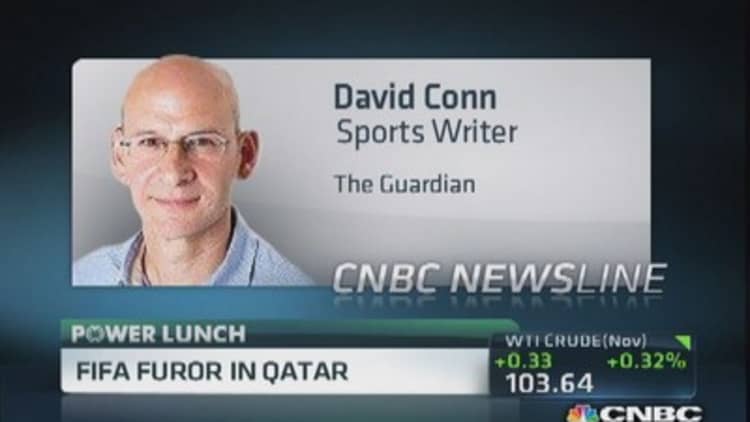Almost 30 million people are living in conditions of modern-day slavery, with India home to the largest enslaved population globally, according to a new index.
The Global Slavery Index 2013, which ranks 162 countries, said India had almost 14 million slaves, followed by China at 2.9 million and Pakistan at 2.1 million. Three quarters of those trapped in modern slavery are concentrated in just 10 countries.
The index published by the Walk Free Foundation, an Australian-based rights organization, defines slavery as forced labor, human trafficking and practices such as debt bondage, forced marriage, the exploitation of children.
(Read more: Are interns forced to work too hard?
In India, the exploitation of citizens largely takes place through debt bondage, or forced work for an employer as a way of paying a debt. In China, it is mainly through forced labor of men, women and children, domestic servitude and forced begging.

As a proportion of the overall population, the West African nation of Mauritania is ranked first with an estimated 150,000 slaves in a population of only 3.8 million.
"While Asia and Africa are home to the vast majority of modern slaves, no continent is free from modern slavery," said Nick Grono, CEO of Walk Free Foundation.
"Globally, Iceland, Ireland and the U.K. are tied with the lowest rankings in the Index. However, it is estimated that there are as many as four thousand people enslaved in the U.K. and more could be done to help them and prevent others suffering their fate," he added.
(Read more: Apple supplier accused of labor violations)
Under 2 percent of the total 29.8 million people in modern slavery are situated in Europe, the organization estimates. This compares with 72 percent in Asia, 16.36 percent in Sub-Saharan Africa, 3.78 percent in the Americas, 3.36 percent in Russia and Eurasia, 2.54 percent in the Middle East and North Africa.
"A number of Middle Eastern countries host large numbers of migrant workers. On average, foreign workers make up 40-90 percent of the populations of Jordan, Saudi Arabia, Israel, the United Arab Emirates and Kuwait. Not all migrants are enslaved, but some will find themselves in situations that can foster enslavement," the organization said.

The Walk Free Foundation is the brainchild of Andrew Forrest, the chairman and founder of Australian mining company, Fortescue Metals Group.
He told CNBC that he had set up the foundation after discovering that slavery was in the mining group's own supply chain after an audit of the company's suppliers. "I then thought if it's all around me, it must be all around the world," he told CNBC Europe's "Squawk Box."
Saying that his current non-executive role of chairman allowed him to dedicate his career to "ending modern-day slavery," Forrest wanted to engage government s and businesses around the world with ending the practice.
(Read more: Cascade of hurdles for firms in Middle East, Africa: CEOs)
In late-September, an investigation by The Guardian newspaper found evidence of forced labor in Qatar during the building of infrastructure for the 2022 World Cup. The report said thousands of Nepalese, who make up the single largest group of laborers in Qatar, face exploitation and abuses that amount to modern-day slavery.
"Some Nepalese men have alleged that they have not been paid for months and have had their salaries retained to stop them running away. Some laborers say they have been denied access to free drinking water in the desert heat," The Guardian said.
Officials from Nepal and Qatar have sought to play down the Guardian report and held a joint news conference to say the migrant workers were "safe and fully respected," Reuters reported.
— CNBC's Ansuya Harjani; Follow her on Twitter @Ansuya_H


